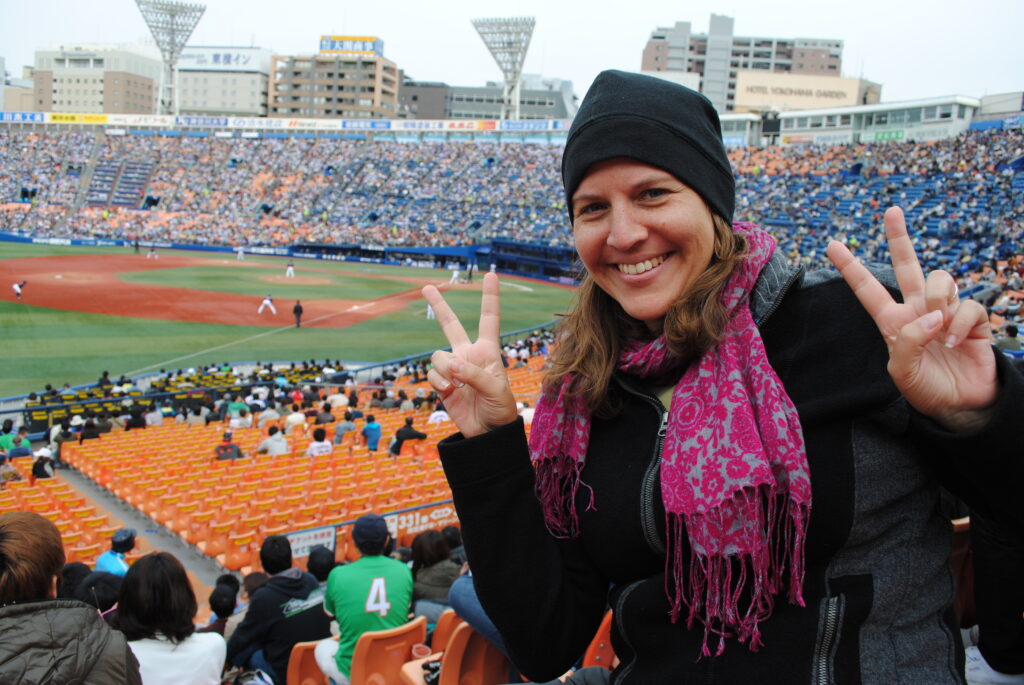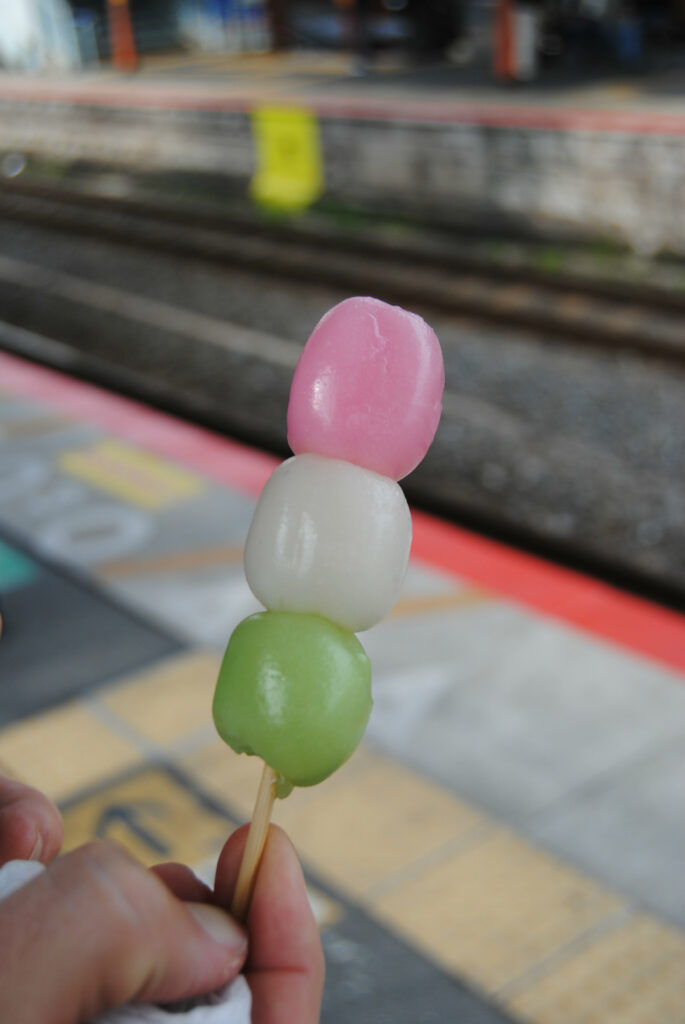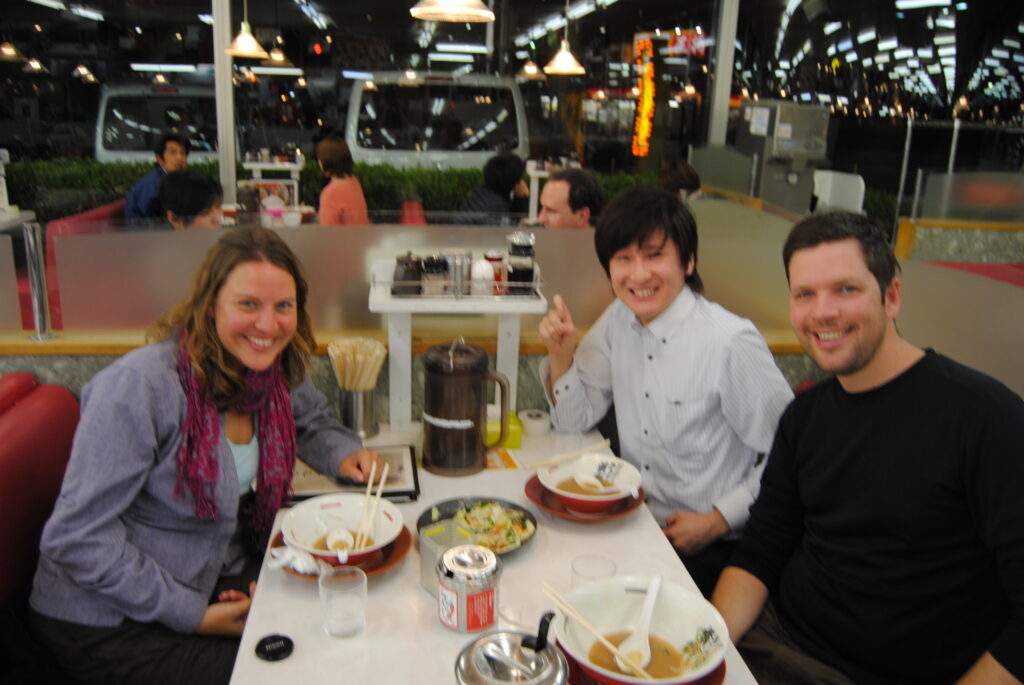Growing up in Hawaii, I always had a particular affinity for Japanese culture. Maybe it was because I had a desperate love for eating mochi or was obsessed with playing Warlords of Japan at school in the 4th grade (a classic simulation game where the winner collects the most armies, land and rice that all American children play to learn about Japanese history, right? Right??) Whatever the reason, it did lead me to choose to study Japanese when required to pick a foreign language in middle and high school. Although I had reached a fluency level by my junior year of high school that felt fairly accomplished, 12 years of not thinking about Japanese whatsoever led me to conclude that this skill had been lost for good.
Nonetheless, I was incredibly excited to visit Japan on this trip. My Japanese language studies had included a very strong cultural component that guided my itinerary planning for our visit. My “cannot leave the country without making sure we do…” list for Japan included the following (all successfully accomplished, I might add):
See the cherry blossoms. I cannot believe our luck with this one. Although I was hoping we could time our visit to Japan with peak cherry blossom season, it was complete coincidence that we managed to be here for this. I had heard from my Japanese teachers how amazing the cherry blossoms are in Japan, but nothing could prepare me for their true beauty. Not only that, but they are literally everywhere in Japan. We were fortunate to see cherry blossoms in full bloom in Tokyo, Hiroshima and Kyoto.




See a baseball game. The only people who love baseball as much or possibly even more than Americans are the Japanese. And as with everything that Japan co-opts, they do it with the most entertainingly Japanese flair.
There is a proper cheerleading section for both teams who boisterously lead constant, catchy cheers throughout the game. There is a special cheer for each player that comes up to bat and for the pitcher when the team is in the field. There are special motions that accompany the cheers using plastic tubes that you bang together. We happened to be sitting on the side of the Yakult Swallows who also pull out plastic blue and green umbrellas and do a special song and dance with them whenever their team scores a run. My minimal internet research suggests they do this to hint to the opposing pitcher “it’s time to hit the showers.”



Watch kabuki. Kabuki is a song/dance art form that started in Japan in the 1600s. Seeing kabuki at Kabuki-za, the premier place to see this in Tokyo, was definitely a highlight.

See Japanese mountains up close and visit a mountain town. Japanese mountains and mountain towns have always had this mythical quality about them that I wanted to experience on this trip. After researching our options, Takayama seemed like a nice place to achieve this goal. It had both a quaint, pretty old town and was within close proximity to the mountains. We spent a day walking around the town and then a day taking the bus up into the mountains.




Bathe in an onsen. Preferably outdoors with a beautiful view. Japanese onsen, or hot springs, are incredibly popular in Japan. There are hundreds of them across the country, so selecting one to go to was no easy task! Onsen can be both indoors and outdoors, so knowing I wanted to experience an outdoor one did help to narrow down the options a bit. One tempting option was an onsen that snow monkeys bathe in–something to do on our next trip!
We happened to find an onsen near Takayama that sounded quite nice and was on the bus route we took up into the mountains. It was completely empty and exactly what I had been hoping for! It was, however, completely, scalding hot. I’ve never stepped foot in something so hot! We could only stand to be in there for about 10 minute, since we stupidly realized after we had already gotten out and changed that there was a hose pumping cold water to use to stay in the onsen longer! Nonetheless, a great activity to check off my Japan list.


Eat mochi. And then eat more mochi. Making “eat mochi” a goal in Japan was extremely easy. Not only are there numerous gourmet sweet shops that sell it, but you can also get a wide variety in every convenience store (Lawson being a particular favorite of ours.)


See Sadako’s paper cranes. This one I am embellishing a bit, because I didn’t know that the paper cranes that Sadako–the girl who died of cancer from the Hiroshima bombing after attempting to fold 1000 paper cranes in the hopes that this would cure her–were actually on display in Hiroshima. I remember reading the story about her in elementary school and feeling extremely sad that she couldn’t fold all 1000 cranes before she died. Her fervent belief in the ability of the folded cranes to cure her made me believe she would have survived had she been successful in folding all 1000 cranes. It made the tragedy of Hiroshima that much more moving to me as a child to read about how someone my age experienced it. Hiroshima was an incredible place to be, especially seeing how much the city has recovered since the tragedy, and being reminded of Sadako’s story made it all the more meaningful.


Visit a real sake bar. I am not the biggest sake fan, but I love the culture of drinking sake. Staying with my sister’s college friend Masaki in Osaka enabled us to have an authentic sake experience we never would have had without a local. We walked into the small place that could only fit the bar and 10-12 stools surrounding it. Masaki told us that the bartender immediately asked him in Japanese, “You know we only serve sake, right?”–assuming that the two white people he was with would be interested in drinking something else. Once it had been established that we were in fact there to drink sake, we took our seats at the bar and Masaki went to the bathroom. As I was studying the all-Japanese menu searching for things I could read, the bartender asked me in Japanese if I could speak Japanese to which I replied, “sukoshi” (a little bit.) This caused both the bartender and the middle aged man in a suit sitting next to us to burst into surprised laughter.
When Masaki returned to the bar, the man next us started talking to him in Japanese. When Masaki affirmed that I could speak a little Japanese, the three of us attempted a conversation. This was very interesting, because older Japanese men are literally impossible to understand based on the way they pronounce words. Even Masaki himself acknowledged that he sometimes has difficulty understanding older men. Much of the conversation involved the man saying something in Japanese and Masaki repeating it to me in verrryy slow Japanese, and then me replying in my botched, basic Japanese. I managed to hold my own though, which made me very happy (given that I had assumed I had entirely lost any Japanese speaking ability.)
The best thing about trying to speak Japanese is that Japanese people will always tell you that you speak it really well and nod their heads even when they have no idea what you are saying. Unfortunately, this is also how you know that you do not speak Japanese well. When you actually do speak Japanese well, they won’t tell you this. One of my Japanese teachers once explained that Japanese people like it when you attempt to speak Japanese, but not when you become truly experienced…not exactly a motivating thing to hear when you are attempting to become fluent at a language! Despite knowing this, I have to say that it still feels good to hear you speak the language well, especially after 12 years of not speaking it at all.
The man in the sake bar we were conversing with ended up buying us a round of sake (which I credit to my excellent Japanese speaking skills) and asked us to taste each one and decide which one we liked best of the three. Sake is poured right to the brim making it impossible to pick it up to drink the first sip without spilling. This means you are supposed to take the first sip by placing your mouth to the glass while it rests on the table. We thoroughly enjoyed doing this with our free round of sake and then each of us incidentally preferred a different sake and got to happily finish our favorite one. All in all, quite a successful evening.

Do something Hayao Miyazaki/Totoro related. Hayao Miyazaki is the acclaimed animator of brilliant films such as My Neighbor Totoro, Spirited Away, and Princess Mononoke. I have loved every Miyazaki film I’ve seen, with a particular affinity for My Neighbor Totoro, a film I first saw when I was 8 years old. Little did I realize that Miyazaki has a museum in Tokyo dedicated to his films and the art of animation. The museum is very well done, because it helps its visitors understand the process of animation using fun displays that are reminiscent of Miyazaki’s films. Unfortunately, no pictures are allowed inside the museum, so what we saw will just remain a memory.



Being in Japan was definitely a highlight of the trip. The feeling of being able to navigate a country using its own language is an amazing feeling and made me want to study Japanese again. And it reaffirmed my love of Japanese culture–with its unique combination of ancient tradition and whimsy unlike any other. I greatly look forward to returning to Japan someday, and hopefully by then I won’t be complemented on my Japanese.